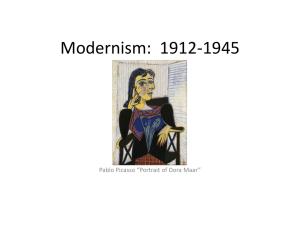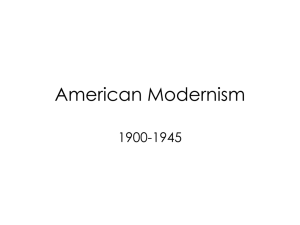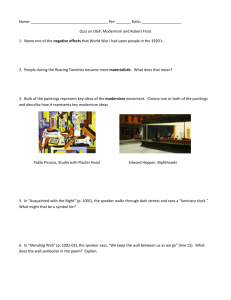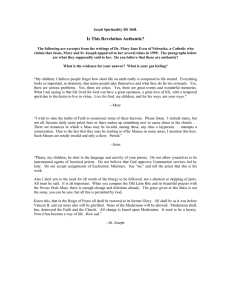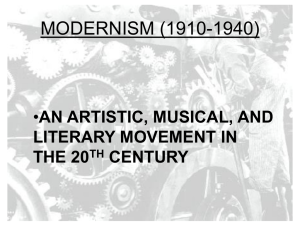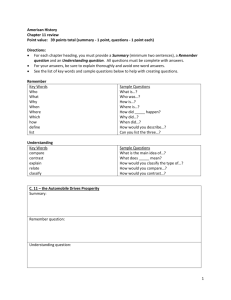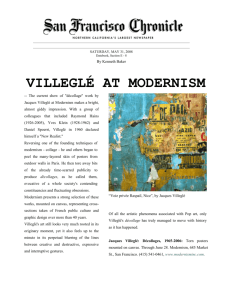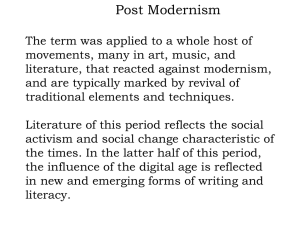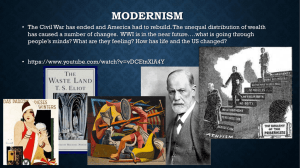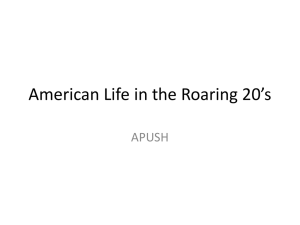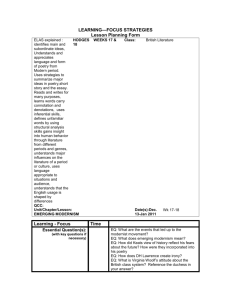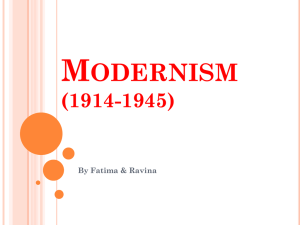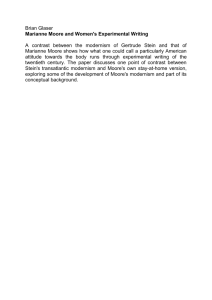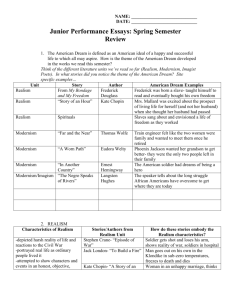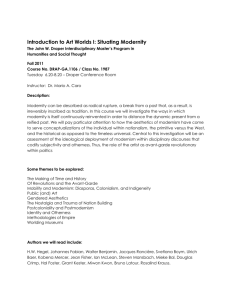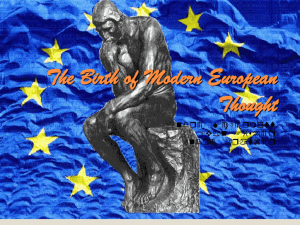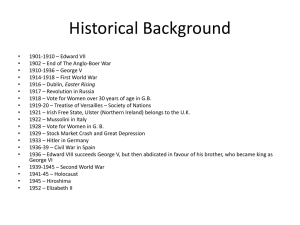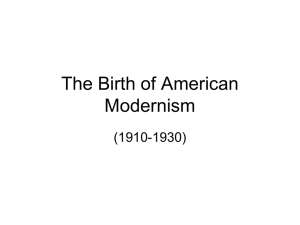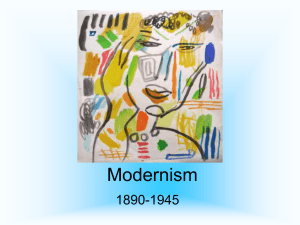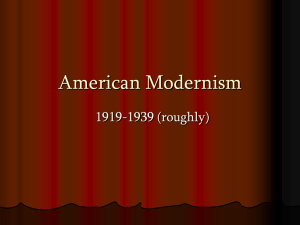MODERNISM 1915-1945
advertisement
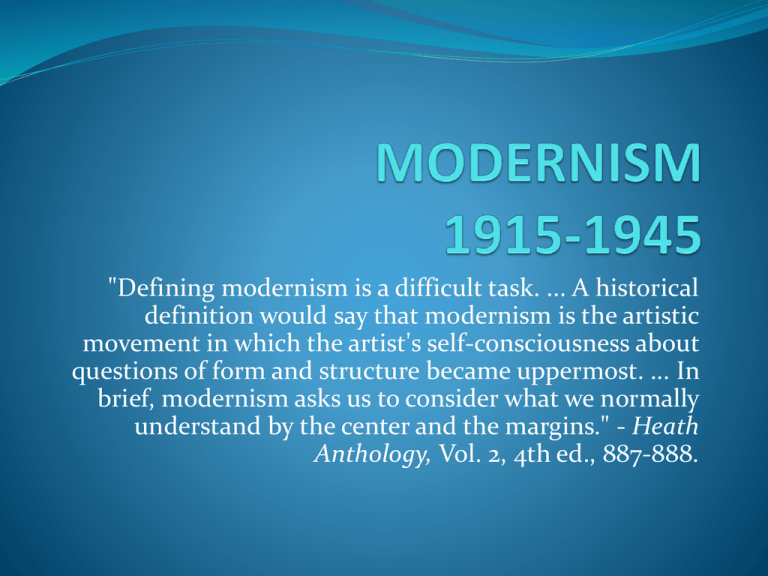
"Defining modernism is a difficult task. ... A historical definition would say that modernism is the artistic movement in which the artist's self-consciousness about questions of form and structure became uppermost. ... In brief, modernism asks us to consider what we normally understand by the center and the margins." - Heath Anthology, Vol. 2, 4th ed., 887-888. THE BASICS: American modernists were driven by the belief that the assurances once provided by religion, politics, or society no longer sufficed. This belief intensified after World War I, when it seemed to many that history itself was coming to an end and that modern life was horrific, chaotic, and ultimately futile. Inspired much by European avant-garde art. MODERNIST VARIETIES…. Some writers focused on their sense of loss T. S. Eliot Others were optimistic and hopeful Ezra Pound But most believed that art replaced religion in providing coherence, guidance, and insight into the human condition. “Make it new” – E. Pound Radical experimentation in literary form and expression: Steam of consciousness Disruption in traditional syntax (word order) and form Reinvigorating the old- rewriting myths, revisiting notions of primitiveness International perspective on cultural matters. Modern Attitudes 1. The artist is generally less appreciated but more sensitive, even more heroic, than the average person. 2. The artist challenges tradition and reinvigorates it. 3. A breaking away from patterned responses and predictable forms. Contradictory Elements 1. Democratic and elitist. 2. Traditional and anti-tradition. 3. National jingoism and provinciality versus the celebration of international culture. 4. Puritanical and repressive elements versus freer expression in sexual and political matters. LITERARY ACHIEVMENTS 1. Dramatization of the plight of women. 2. Creation of a literature of the urban experience. 3. Continuation of the pastoral or rural spirit. 4. Continuation of regionalism and local color. MODERN THEMES 1. Collectivism versus the authority of the individual. 2. The impact of the 1918 Bolshevik Revolution in Russia. 3. The Jazz Age. 4. The passage of 19th Amendment in 1920 giving women the right to vote. 5. Prohibition of the production, sale, and consumption of alcoholic beverages, 1920-33. 6. The stock-market crash of 1929 and the Depression of the 1930s and their impact. MODERNISM AND ‘THE SELF’ Chief characteristic of the self is alienation….could also be an alienated generation (Gertrude Stein) Alienation leads to an awareness about one’s inner life. Revisiting The Great Gatsby…. If we don’t consider the year published, consider these two questions…. Does Fitzgerald’s work fit into Realism or Modernism….why? Does Edith Wharton’s Roman Fever belong to Realism or Modernism? Why? Reminder…. What is Realism? A faithful representation of reality (concrete, historical) in literature Emphasis on development of believable characters. Written in natural dialect. Emphasis on individual(s) in his/her social environment Credits Information from: PAL http://www.csustan.edu/english/reuben/pal/chap7/7in tro.html?AX AND The Literature Network http://www.online- literature.com/periods/modernism.php
